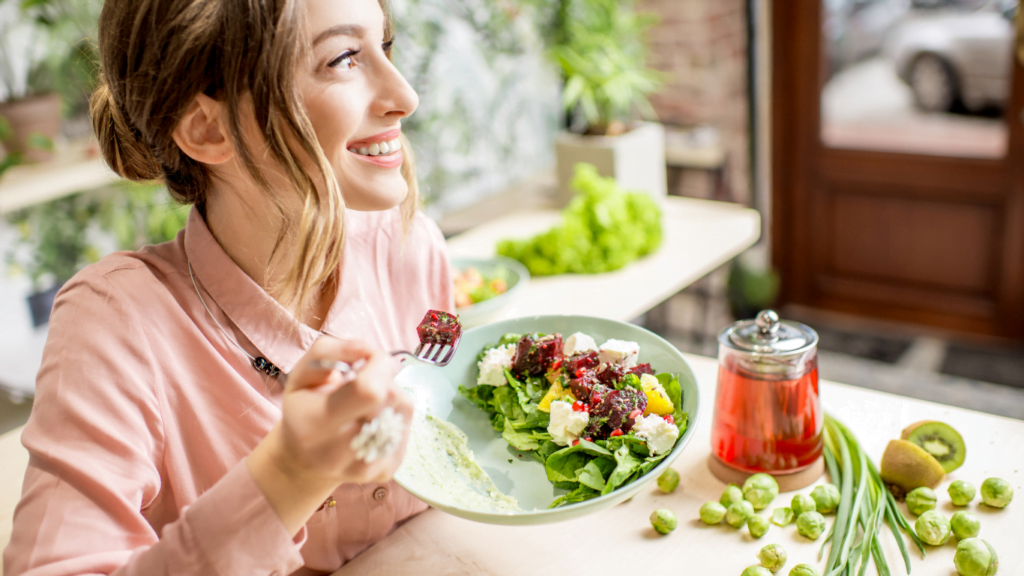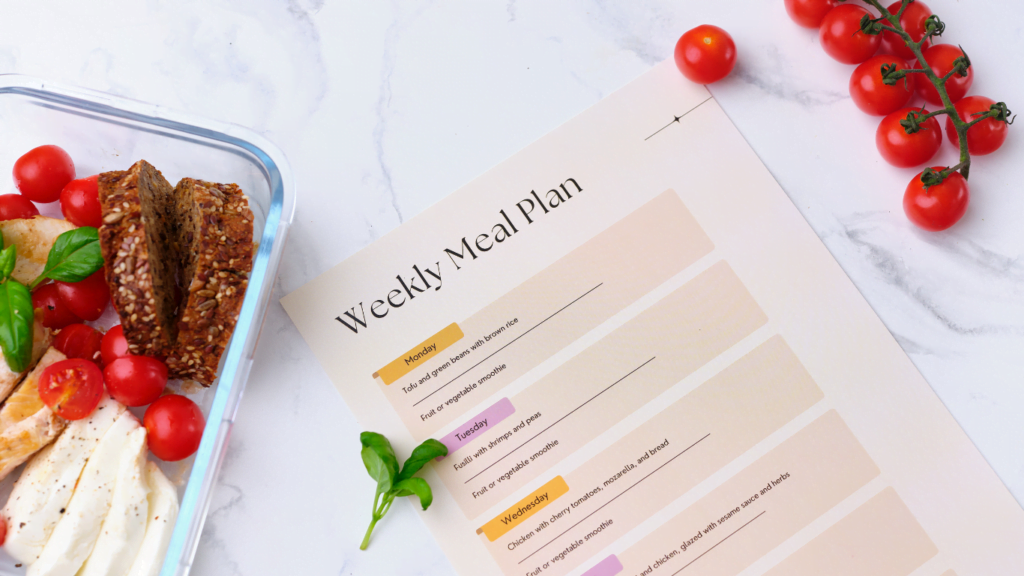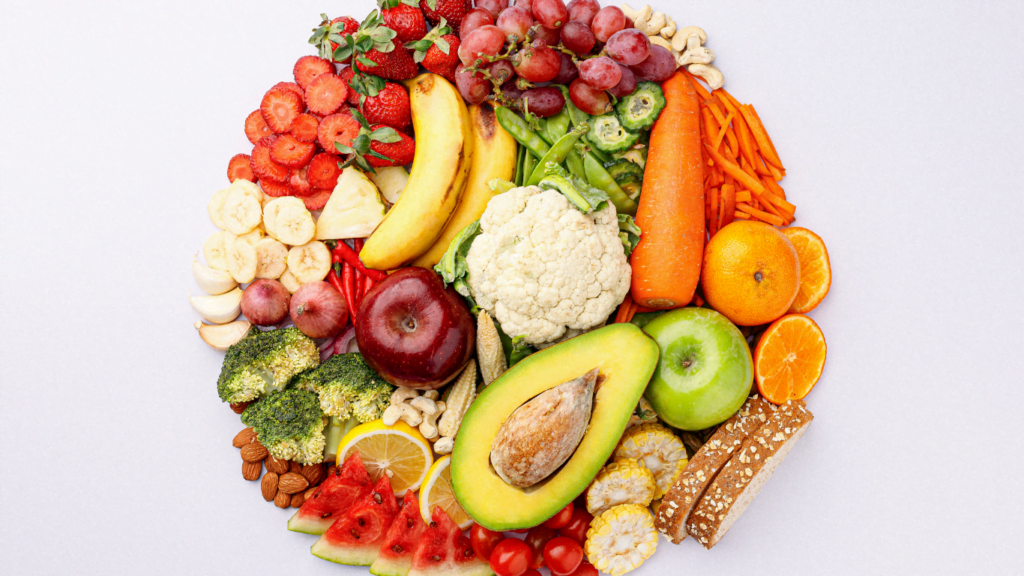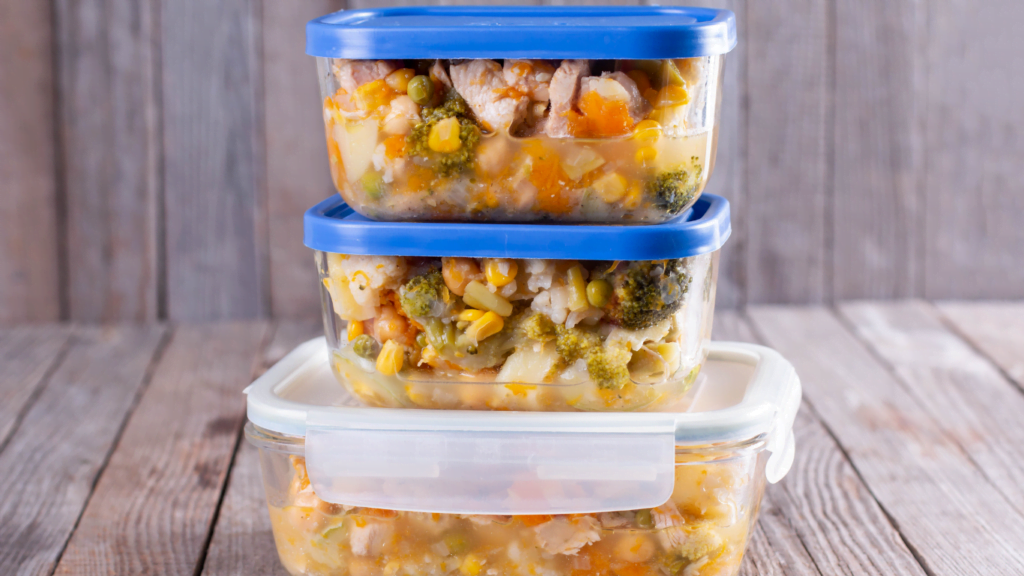
How To Eat Healthy On A Budget?
Posted in :

I understand that it might seem like eating healthy is expensive, but in reality, some of the most nutritious foods are also budget-friendly. Plus, there are a few strategies you can employ to eat healthy while making the most of your food budget!
Here are my best tips for: How To Eat Healthy On A Budget?
Easy ways to eat healthy on a budget Plan your meals and snacks each week.
The most commonly used phrase says: It is terribly expensive to eat healthy food.
When you compare organic fruit with conventional fruits, the two are often about the same amount.
In addition to fresh fruits, poultry or fish in your grocery shopping cart, the latter is more likely to be rung lower at your checkout counter.
Certainly policy improvement and other action are necessary to create an environment for food where healthy choices can easily be easily made.
Until then you know you can create healthier meals cheaper and quicker.
There are a few things you can do to stretch your food dollars further while putting healthy foods on the table!
Here are my best tips for eating healthy on a budget! Easy ways to eat healthy on a budget Plan your meals and snacks each week.
Eat fruits and vegetables that are in season.
You’ll get top nutrition and pay less for pears and sweet potatoes in fall and berries in the summer, for example.
Focus on cheaper fruits and vegetables like bananas, apples, oranges, potatoes, and spinach.
There’s no set-in-stone budget percentage for how much you should spend on the grocery budget line.
But if you’re curious, the average family of four spends between $928–1,108 a month on groceries.

Plan Meals
Make a list ahead of time and do not visit the supermarket on an empty stomach.
“When we go to the grocery store without a plan of action, we have a tendency to pick up random things without thinking about what we should be buying or eating,”
Don’t shop hungry.
We know you’ve heard it before, but don’t shop hungry.
That’s the surest way to load up on impulse buys and junk food—because everything salty or sweet is a major temptation on an empty stomach.
Eat a healthy snack before you head out the door, or go shopping right after a meal.
Keep things simple. Healthy doesn’t equal fancy. Shopping for food on a budget Stick to your grocery list.
Menu planning is a great way to make sure you’re eating a balanced diet and meeting your nutritional needs.
Use coupons on foods you were already going to buy. Check the unit price. Sometimes the bigger package is a better deal.
Don’t buy all organic. It’s not necessary. Resist the impulse buy at the checkout counter. Spend less time in the supermarket.
Clip only those coupons that apply to the items on your list.
At the store Once you get to the store or pull up your online ordering form, these tips can help you shop smarter and eat healthy: Eat a snack or meal before you shop.
When you’re hungry, everything looks so tempting.
Avoid shopping alone since that can lead to impulse buying.
Learning which store brands your grocery store carries can help you reduce your total at the cash register.
Also, having older children along can teach them lifelong skills. Stick to your list. Steer clear of prepackaged convenience items.
I’ve made it a priority to fill my plan with foods that help my family eat in a way that feels healthy to us and makes us feel good — all while keeping our spending totally in check.
These are some of the foods that I rely on to get the job done. 1. Eggs Eggs are a huge part of my weekly plan.
From hard-boiled eggs that serve as a breakfast on the go or a mid-afternoon protein boost , to a quick fried egg to bulk up a simple pile of beans and greens into a meal, to frittatas loaded with vegetables.

Eat Healthier
With food prices rising, your grocery bill may be giving you sticker shock.
But you shouldn’t toss your healthy eating goals because your food budget’s getting squeezed.
Now is a great time to pick up — or brush off — some smart-shopping and meal-planning skills.
These skills can save money while buying and preparing healthy food for your family.
Farmers markets and local food stands often have the best prices.
Shop for items in season and buy only what you need. Use fresh produce quickly to prevent spoiling and food waste.
Keep frozen fruits and vegetables on hand.

Keep your pantry stocked
Before you start cooking more, there are a few basics you need on hand: oil, vinegar, salt, pepper (and any other spices you like), onions, and garlic.
I’d also add to stock up on cans of tomatoes, tuna, and garbanzos (or other beans), pasta, rice, lentils, potatoes, frozen fruits and vegetables, and coffee and/or tea.
If you have these things in your house, you can make very quick and healthy dishes without going to a grocery store all the time.
They’re often cheaper than fruits and vegetables and can work in a wide range of recipes.
Try Growing a Garden If you can, growing your own fruits and vegetables is a great way to save money and have fresh produce at your fingertips.
Even if you don’t have a yard to grow a garden, many fruits, vegetables, and herbs can grow in pots on patios or balconies.
Having a constant supply of fresh produce at home can save you money at the store.
It’s no secret that income and time can be barriers to buying and preparing healthy foods.
But if you can find the time, far and away the most effective way to eat healthier on a budget is to simply cook at home.
Despite the popular perception, processed food will usually cost more than food you cook yourself.
At any given time, you’re likely to find super-size bags of broccoli , cauliflower , peas , and spinach in my freezer.
Maybe butternut squash and edamame, too.
While I do love fresh veggies, their frozen counterparts are just as healthy and easier on my budget, plus I don’t have to worry about them going bad to quickly.
In fact, frozen vegetables, in particular, tend to preserve their nutrition because they are frozen very quickly after being harvested.
Canned beans, salmon, and tuna are good sources of protein.
Even though fruits, veggies, and lean meats are generally stamped with a higher price tag, there are plenty of creative ways to eat delicious, nutritious foods without breaking the bank.
Healthy eating is important for both physical and mental health.
The food you eat supplies many types of macronutrients such as carbohydrates, fats, and proteins which deliver the energy your body needs, explains Madalyn Vasquez , registered dietitian at Summit Health.
Ms. Vasquez’s tip: The key to selecting healthy canned or frozen produce is to read the label carefully.

Eating Healthy Options
Now that you have the essentials in your kitchen, you can make your own salad dressing very quickly and much more cheaply.
All it takes is mixing up some olive oil, vinegar, salt, and pepper. Add garlic or other spices if you like. You can store it in the fridge for a week or so.
Pulse stale bread in a blender to make breadcrumbs.
Freeze to use later.
Slice, then bake leftover pita bread or corn tortillas to make chips. Cut day-old bread into cubes.
Toss with olive oil and herbs.
Bake for homemade croutons. Dehydrate fruit and vegetables to preserve and enjoy later.
Don’t immediately toss “expired” foods.
Most are still good after the sell-by date. Use the freezer to save money Package and label foods well – with the food name and the date.
Use a variety of grains. Instead of expensive quinoa try brown rice, barley, farro or oats.
Buy plain whole oats instead of the packaged, pre-flavored ones.
Whole grains, like brown rice and oats , are also cheaper per serving than most processed cereals.
Less processed foods are also often sold in larger quantities and yield more servings per package, saving you money overall.
Eat less meat
Eat more plant proteins like lentils , chickpeas , and beans.
Stretch taco meat by adding black beans or pinto beans for fiber and protein. Try eggs for a cheap protein at meals and snacks.
Also brown rice, millet, barley, and oats, are all available in bulk.
They also keep for a long time if you store them in airtight containers. This is also true for beans, lentils, some nuts, and dried fruit.
These are all staple foods that are relatively inexpensive and can be used in a variety of nutritious meals.
Summary Many foods are available in bulk for a way lower price.
They keep for a long time in airtight containers and can be used in a variety of nutritious, inexpensive dishes.
Processed foods have their pros and cons but they shouldn’t be entirely labeled as unhealthy, since the degree of processing and type of processing affects nutrient content.
For example, thanks to processing methods like freezing and canning, we can fill our freezers and stock our pantries with healthy staples.

Freeze Leftovers
Soups, chill, pasta dishes, and casseroles are ideal for thawing and reheating for quick, healthy weeknight meals.
Stock up on frozen foods when they are on sale. Check circulars and store apps for sales.
Freeze leftover tomato paste, pesto, sauces into ice cube trays to use later. Freeze bread if you won’t eat it all before it goes stale.
Fresh meats, fish, and some produce (bananas, berries, avocados, broccoli, cauliflower, Brussels sprouts , corn) freeze well.
Buy frozen seafood instead of fresh. It’s generally cheaper and won’t go bad in a couple of days.
Consider purchasing nonperishable staple foods in bulk.
Even though it may cost more upfront to buy a “family-sized” package products like whole grains, lentils, and dried beans.
Put your leftovers to good use. Take that extra chicken from taco salad night and throw it into some cheese quesadillas later in the week.
And that bag of frozen turkey meatballs you served with marinara and zucchini noodles?
It had too many meatballs for one meal.
So, serve the rest with low-sugar barbecue sauce on rice.
When you repurpose ingredients or pick items you can use more than once, it keeps you from buying all-new things for all-new meals every mealtime.
Healthy Living
Choose lean meats and lean cooking options, like broiling and grilling. Buy a larger pack. Use one portion and freeze the rest for another meal.
Consider adding more meatless meals to your menus with tasty bean-based dishes.
Forget the expensive ingredients.
Matcha , protein powder, truffled anything, and other ingredients are not required for good health.
Oatmeal is a healthy, inexpensive whole grain with no added salt or fat.
One of the downfalls of pre-packed fruits and veggies or canned tuna is that they are doused in unnecessary sauces or add.
These juices or syrups contain added sugar and extra sodium. You want to aim to minimize the amount of added sugars and sodium.
Read the label for low sodium options or fruits containing 100 percent fruit juice.
Balanced Meals
Whole Chicken
When I’m really trying to stick to my budget and get this lean meat into my meal plan, I always stick with buying the whole bird.
For starters, it’s cheaper than most individual cuts (all except the legs). Plus it leaves my family of two with upwards of three dinners.
Buy whole foods
Some foods are more affordable in a less processed form. For example, a block of cheese is cheaper than shredded cheese, and canned beans are less expensive than refried ones.
Whole foods are often less expensive than their processed counterparts. You can also buy them in larger quantities.
Buy Generic
Many times, the off-brand and brand-name items aren’t really all that different when it comes to their actual ingredients or quality.
We know that isn’t always true—and it’s fine be picky about your favorite cereal, chocolate or coffee as long as you budget for it.
But give generic brands a chance.
Sometimes you’re drawn to a certain brand only because the company spent more on design and marketing—not because they’re delivering a higher-quality product.
6 Food Budget Tips
- Consider the following tips before heading to the market: Plan out a few meals you want to prepare the next week and create your shopping list based on these ingredients.
2. Plant and grow tomatoes, cucumbers and salad greens outside your door. Join a community garden where you can swap for variety. Volunteer at a local farm. You might be able to get fresh produce if they have extra.
3. Pack your own lunch. Carry a nut butter sandwich and fruit for nutrient rich foods or snack on the plane. Opt for fast-casual restaurants like Chipotle or Panera instead of full service to save. Eat out at lunchtime instead of dinner to save money.
4. Try replacing meat 1 or 2 times per week with beans, legumes, eggs or canned fish. These are all cheap and nutritious sources of protein.
5. You might be surprised to see how much you’re paying for highly processed foods like soda, crackers, cookies, and prepackaged meals.
Despite the fact that they often lack beneficial nutrients and may be high in sodium or extra sugar, they’re also very expensive. By skipping processed foods, you can spend more of your budget on higher quality, nutrient-rich whole foods.
6. Buy seasonal produce. The problem with healthy produce is that it goes bad. That doesn’t mean you shouldn’t buy it—just don’t get more than you’ll eat. One easy fix is to get some produce that can ripen on your counter instead of decomposing there.

Organize your grocery list
The best grocery lists are organized by aisle, or at least by store section.
This keeps you from going back and forth while shopping (because that’s a guaranteed way to end up with a load of junk food in your cart).
This way you will focus on the nutrient rich foods in your cart.
Here are a few ways to save online and at the grocery store:


